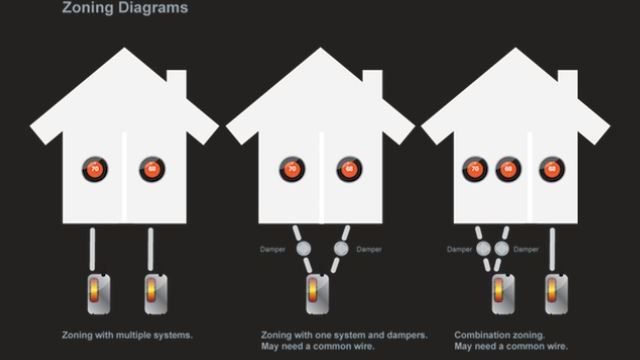Nest smart thermostats have the capability to control the temperature in different ‘zones’ of the house. But the question is, how many zones can a Nest thermostat control? Nest can do this up to 20 zones.
A house is said to have a zoned system if there is more than one thermostat working to moderate the temperatures of different rooms or floors. It is also said to have this system if different heating systems are operating in the house. This is contrary to the conventional HVAC temperature systems, which control the temperature of the entire house in one go.
Zone heating and cooling systems are quite useful, especially for houses with multiple levels, as they facilitate the owner to preferentially control the temperatures of various zones in their house.
Understanding Zones

If your home has different thermostats that control different parts of your house, then these areas are defined as zones, for example, having different thermostats for the ground floor and first floor of your house. Nest thermostats are compatible with a majority of zone systems.
It is necessary to have a C wire for some zone systems to be compatible with your Nest thermostat. A multistage system is equipped with various heating and cooling levels. These, however, require additional setup for the multiple heating and cooling wires installed within them.
How Many Zones Can A Nest Thermostat Control?

Google Nest thermostats are generally designed for smaller houses with only two or three thermostats installed. Each zone is controlled by one thermostat; although the Nest app supports a maximum of 20 devices in a house, you can have up to 20 Nest thermostats in your home. All working simultaneously to maximize the output and cut back unnecessary costs.
There is another system in which a house’s heating and cooling system can be managed, a multistage system. A multistage system modifies a single zoned system with multiple heating or cooling levels.
It efficiently controls the house’s temperature by using minimum power when extra heating or cooling is not required.
Different Nest models support a different number of heating and cooling levels-
The 1st gen Nest thermostats are made to support two heating stages and one cooling stage.
The Nest thermostat E is designed for one heating stage, one cooling stage, and another stage that can be set for either heating or cooling, which will require manual setup to be operational.
The 2nd and 3rd stage Nest thermostats support three heating stages and two cooling stages.
Auto-Away Mode of the Nest Thermostat
This feature is a key element of Nest multi-zone systems. The smart technology that Google Nest uses determines if the house is unoccupied and then switches the heating and cooling system to minimize the power consumption while maintaining a suitable temperature level. You can turn this off easily.
It starts operating as soon as it detects that you are back home.This motion sensing of the Nest thermostat coordinates with the smart learning feature, and we experience a controlled and balanced temperature output which is just perfect!
How Does Nest Control Different Zones?
Nest thermostats use the Time to Temperature programming to determine the time taken to moderate the temperatures of your house.
With multi-zones or multi-stages in a house, the smart features will control the switching period of different thermostats in the most efficient way to maintain the optimal temperature level.
The temperature sensor of the Nest thermostat learns the schedule you follow, and in no time, it begins operating by itself.
Nest Limitations with Zone Control
The first is to confirm whether your configuration is compatible with Nest or not. Nest thermostats depend on your old, existing thermostat to function. They can control the devices to which the wires are connected. To ensure there is no power outage, you can add a C-wire to it.
Can a Nest do 3 zones?
As we discussed above, the Nest thermostats are designed to operate in systems with multiple thermostats, a multi-zone system, which means the house is divided into zones using the dampers in the duct pipes.
Do you need multiple Nest thermostats for multiple zones?

While using multiple thermostats is recommended to optimize productivity, there are alternatives.
With a single thermostat unit in your house, you can look up a Nest Temperature Sensor device if you want to control the temperatures of various zones separately. If you have one and it’s not working, try troubleshooting your nest sensor.
The sensors placed in different house locations will connect to the thermostat, and each location’s readings will control the respective temperatures. Make sure they’re all well connected.
Can one thermostat control multiple zones?
Yes, it can control multiple zones only when integrated with the Nest temperature sensor devices as mentioned above. You can have the best nest thermostat to cover multiple zones in your house.
Can Nest control two heating zones?
The answer to this query is explained above.
Final Talk
The feature to control the temperature separately in different rooms ensures you are on an energy-saving track. connecting it with a home kit makes everything better. Google Nest thermostats are a trendsetter in this field, ranging from multi-stage systems to multi-zone operations and even temperature sensors. The technology is truly unmatched!







Leave a Reply